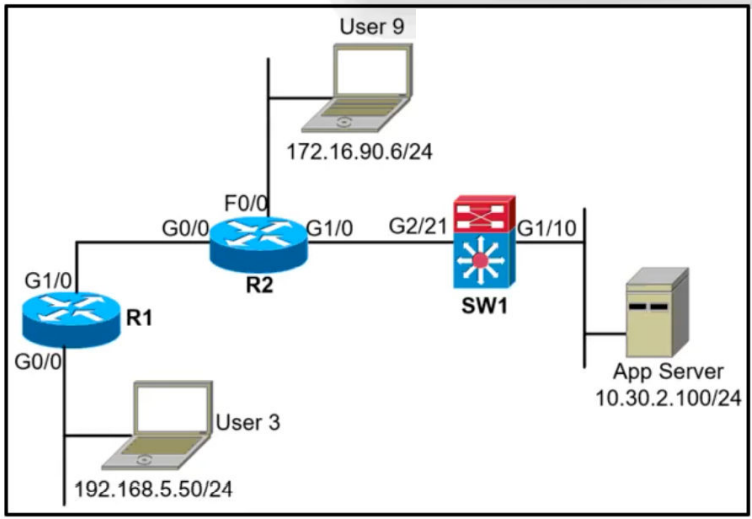


Refer to the exhibit. A network administrator must block ping from user 3 to the App Server only. An inbound standard access list is applied to R1 interface G0/0 to block ping. The network administrator was notified that user 3 cannot even ping user 9 anymore. Where must the access list be applied in the outgoing direction to resolve the issue?
Patrick1234
Highly Voted 2 years, 5 months agobk989
11 months, 2 weeks agobk989
10 months, 2 weeks agoXBfoundX
Most Recent 10 months, 1 week agoFenix7
11 months ago[Removed]
11 months, 2 weeks agoCommando1664
1 year, 2 months agoChiaretta
1 year, 3 months agolouisvuitton12
1 year, 8 months agojansan55
1 year, 8 months agoMuste
1 year, 10 months agointeldarvid
1 year, 11 months agoBrand
1 year, 10 months agointeldarvid
1 year, 11 months agopepgua
2 years agoTypovy
2 years, 2 months agoJerome_2046
2 years, 2 months agoanaisa_goncalves
2 years, 7 months agoanaisa_goncalves
2 years, 7 months agoVergilP
2 years, 7 months agoRemsync
2 years, 8 months agoRemsync
2 years, 8 months agoRemsync
2 years, 8 months ago